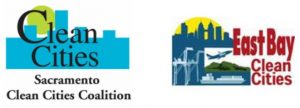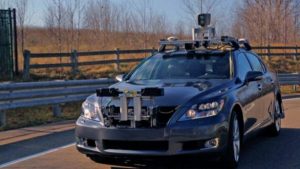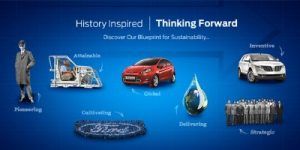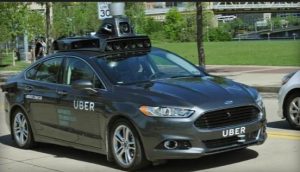 Have you ever wished you could ride in a passenger seat during a self-driving car test? You might want to go to Pittsburgh and skip Mountain View, Calif.
Have you ever wished you could ride in a passenger seat during a self-driving car test? You might want to go to Pittsburgh and skip Mountain View, Calif.
You can ride in an autonomous Ford Fusion as part of Uber’s self-driving car test project in Pittsburgh; and that will soon include a Volvo plug-in hybrid. Google has kept its test runs in its corporate hometown of Mountain View controlled to allow for only employees and strategic partners to participate.
Uber CEO Travis Kalanick told the press last week that development of autonomous vehicles is essential to the future of the six-year-old ridesharing company. Much of it has to do with eventually eliminating the cost of paying drivers, which would allow Uber to drop the cost of a ride down and make it even more attractive to customers who don’t want to make a car payment or pay for a taxi ride.
“We’ve got to be laser-focused on getting this to market, because it’s not a side project for us,” Kalanick said. “This is everything. This is all the marbles for Uber.”
Uber is no longer involved with Carnegie Mellon University’s self-driving car research for reasons that were never explained. That alliance with the Pittsburgh-based university, which is considered to be the leading university R&D center for autonomous vehicles, ended in the spring after being formed a year earlier. Uber did hire away four faculty members and 36 researchers and technicians, but Uber never collaborated with CMU on a single project. The ridesharing company did provide the $5.5 million gift to the university that it committed to.
Uber does have its own drivers behind the wheel to reduce the risk factor and protect passengers and other vehicles on the streets; and the company is working with authorities in Pittsburgh and the state of Pennsylvania to make sure safety rules are followed in the test cars. Tesla Motors is continuing to back its semi-autonomous Autopilot system even after a fatality and several collision incidents related to the Autopilot system. Safety will continue to be the key issue to be addressed by all parties rolling out self-driving car technologies.
Last week was significant for the next phase of autonomous vehicles with announcements from Uber and two major automakers. Plug-in electrified and hybrid vehicles have typically been used in self-driving test projects.
Purchases of plug-in electrified vehicles are expected to reach the 10%-to-20% of U.S. new vehicle sales mark, from their current less-than-1% level, in the next 15 years, according to a few industry analysts. Being connected to self-driving technologies and mobility services is expected to support that sales increase.
Uber will be adding Volvo cars to its test project. The companies will be investing $300 million to put 100 self-driving Volvo XC90 plug-in hybrid SUVs on the streets of Pittsburgh in less than four months.
Self-driving hardware and software will be added jointly, and tech support will be provided by Volvo. Uber will be adding Lidar, radar, additional cameras and sensors. Uber will allow customers to summon the self-driving vehicles from their phones. The fleet will be supervised by Uber staff in the driver’s seat for the time being.
Uber said it is buying the XC-90s from Volvo and is adding the self-driving hardware and software for the specific needs of its ride-hailing service. Uber is developing the technology in its Pittsburgh tech center, opened just 20 months ago. Volvo will provide technical support.
Sherif Marakby, Uber’s vice president of global vehicle programs, is leading the project. He joined Uber in April after a 25-year career at Ford in numerous senior engineering management positions. In his most recent role with Ford, Marakby served as the automaker’s director of global electronics and engineering, a position where he was responsible for electrical components on all Ford vehicles globally, including infotainment, driver assist, and connectivity.
He said that Uber’s deal with Volvo isn’t exclusive. The ridesharing company will roll out the test project to other cities and there could be other automakers and technology suppliers joining in. As for now, working with Volvo makes a good deal of sense for Uber.
“The foundation of the collaboration is Volvo’s strength in safety and vehicle development, and Uber’s strength and commitment to autonomy and autonomous technology,” Marakby said. “A significant part of that is the software. All of that is developed in house.”
Uber also announced last week that it had acquired Otto, a 90-person start-up company providing self-driving truck systems that could bring more of that technology to shipping and cargo transport. The acquisition is taking place for an undisclosed cost.
Uber plans to open a 180,000-square-foot facility in Palo Alto, Calif., to house the trucking tech company. Otto will operate as a stand-alone company focused on upending the long-distance trucking industry. Otto had previously hired former Google and Carnegie Mellon engineers. After the acquisition is complete, Otto engineers will also work out of offices in San Francisco and Pittsburgh.
Uber’s chief said the strategic alliance will team up with hardware manufacturers, Otto’s software expertise, and Uber’s large network of more than 50 million monthly riders as potential customers for a wide range of delivery services. It places Uber in the best position to be competitive with Silicon Valley giants like Google, Kalanick said.
Ford Motor Co. is tapping into Silicon Valley talent as well, said CEO Mark Fields, last week while visiting the automaker’s Palo Alto research facility. Fields announced that the company will offer a fully automated driverless vehicle for ridesharing services in 2021.
Fields said Ford is increasing its investments in Silicon Valley technology firms, tripling its investment in semi-autonomous systems, and more than doubling the size of its Palo Alto research team while expanding its campus in Silicon Valley.
Ford’s chief said he was not concerned that rival General Motors had made a high-stakes play in ride services with its $500 million investment in Lyft in January. “We’re not in a race to be first,” Fields said.
Ford does not yet know whether it will partner with Uber, Lyft, or other ride-hailing and ridesharing service providers. Fields said Ford may choose not to partner, and roll out such services on its own. The automaker has been rolling out carsharing and ridesharing in Europe and the U.S. in test projects in recent years. Fields does see Ford going toward fully autonomous vehicles, similar to the strategy Google has taken.
Ford Chief Technical Officer Raj Nair said the company likely will not offer a fully autonomous car without steering wheels or pedals to consumers until 2025 or later. Launching a self-driving car first for ridesharing is a better way to reach the mass market and make the cars more affordable, he said.
Uber CEO Kalanick isn’t speculating on when Uber might be ready to dispense with the human driver, saying that full automation can only be used now in limited places light in traffic. Uber and Lyft riders are anticipated to be more open to using driverless cars. Studies show that younger, Millennial consumers make for most of the Uber and Lyft customers. They’re less interested in car ownership and want to tap into the most efficient, advanced technologies to meet their mobility needs. Many of them have taken ridesharing trips and enjoy the reduced cost and socializing. They prefer it over driving their own car home from work, being absorbed and stressed out over getting through congested traffic at slow speeds. Whether it’s a human or machine driving the car, their main purpose for using Uber and Lyft is accomplished.
Electrified vehicles are expected to play a role in the future of self-driving, shared rides in urban settings. Their cost efficiency is valued, and growth in the charging infrastructure is expected to take away fear of being stranded in an electric car. Evercar, a provider of shared EVs for on-demand drivers (like Uber and Lyft), reported in the spring that it has been growing quickly in Los Angeles. By applying innovations in electric vehicles and carsharing technology, the company is making it possible for nearly anyone to access a vehicle to drive for the on-demand economy, Evercar said.
Navigant Research sees a global trend developing with on-demand mobility programs sprouting up, which indicates that transportation is moving toward a future that is both shared and electric. Automakers and tech partners are testing projects to examine its potential.
BMW recently announced that it will be expanding its ReachNow carsharing program to cover Portland, Ore., after successfully bringing the service to Seattle earlier this year. The service attracted more than 13,000 members within its first month of operation. BMW uses a mix of vehicles for the program that includes Mini Coopers and the BMW i3.
Nissan recently announced its collaboration with San Francisco-based electric scooter-share company Scoot Networks. The two companies will deploy 10 mobility concept cars (the Renault Twizy) in the Bay Area.
On August 2, startup company Green Commuter launched a carshare and vanpool fleet in Los Angeles using Tesla Model X SUVs. And there are several other two-wheel and four-wheel electrified vehicles being used in demonstration projects around the world.
Navigant says that companies looking to capitalize on this rapidly evolving business will need to offer high levels of vehicle accessibility, affordable hourly usage rates, and differentiating product options. As for autonomous vehicles, a recent Navigant leaderboard rating placed Daimler, BMW, Audi, and General Motors as the top automakers in the field. Ford, Volvo, Toyota, and Honda followed in the leaderboard ratings. All of these companies are investing heavily in connected, electrified, advanced technologies.

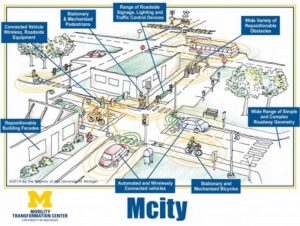 If you work in the auto industry, staying informed can be all-consuming these days – with the Takata airbag recall, the Volkswagen diesel car scandal, automakers striving to become the first one selling self-driving cars, and the impact low fuel prices is having on green car sales. There is one topic I would advise you to stay current on, as it touches upon all the rest – connected car technologies.
If you work in the auto industry, staying informed can be all-consuming these days – with the Takata airbag recall, the Volkswagen diesel car scandal, automakers striving to become the first one selling self-driving cars, and the impact low fuel prices is having on green car sales. There is one topic I would advise you to stay current on, as it touches upon all the rest – connected car technologies.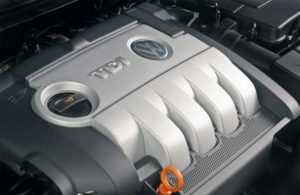 More on the Volkswagen diesel emissions scandal……… Frank Tuch, previously head of VW’s group quality control,
More on the Volkswagen diesel emissions scandal……… Frank Tuch, previously head of VW’s group quality control, 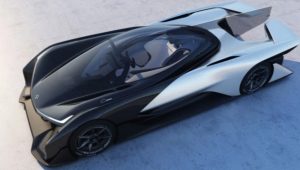 Faraday Future: This Chinese startup has been getting a lot of attention in the past few months, with that culminating at the Consumer Electronics Show in Las Vegas. The company is backed by Chinese billionaire Jia Yueting and plans to build a 900-acre, $1 billion factory in Nevada in the near future. Faraday Future unveiled the Batmobile-like FFZERO1 in Las Vegas, which has four electric motors (one at each wheel) combined that deliver more than 1,000 horsepower, enough to send the car from 0 to 60 mph in under three seconds and to a top speed of 200 mph. What’s been most interesting about Faraday is the platform architecture that it’s built on. It’s very flexible – Faraday can add or remove batteries, shorten or extend the chassis depending on the body that will be attached, or other applications. It’s a much faster process than what traditional OEMs go through – new vehicles can be production ready in 18 to 24 months, the company said. There’s talk about Faraday Future vehicles being deployed in Uber-like ridesharing services and as autonomous vehicles. Wherever this new startup is heading, it gained a wave of buzz and news coverage at CES and the Detroit Auto Show.
Faraday Future: This Chinese startup has been getting a lot of attention in the past few months, with that culminating at the Consumer Electronics Show in Las Vegas. The company is backed by Chinese billionaire Jia Yueting and plans to build a 900-acre, $1 billion factory in Nevada in the near future. Faraday Future unveiled the Batmobile-like FFZERO1 in Las Vegas, which has four electric motors (one at each wheel) combined that deliver more than 1,000 horsepower, enough to send the car from 0 to 60 mph in under three seconds and to a top speed of 200 mph. What’s been most interesting about Faraday is the platform architecture that it’s built on. It’s very flexible – Faraday can add or remove batteries, shorten or extend the chassis depending on the body that will be attached, or other applications. It’s a much faster process than what traditional OEMs go through – new vehicles can be production ready in 18 to 24 months, the company said. There’s talk about Faraday Future vehicles being deployed in Uber-like ridesharing services and as autonomous vehicles. Wherever this new startup is heading, it gained a wave of buzz and news coverage at CES and the Detroit Auto Show.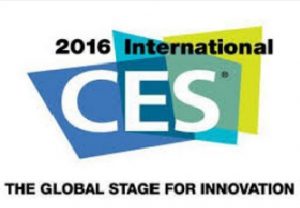 Self-driving cars and electrified vehicles were key themes at the 2016 Consumer Electronics Show (CES) last week in Las Vegas. CES has become the leading showcase arena in the U.S. for the coolest, cutting-edge devices for cars and other consumer products. It seems to be evolving into the leading event of the year for the auto industry, slightly surpassing the North American International Auto Show right before it starts up this coming week in Detroit.
Self-driving cars and electrified vehicles were key themes at the 2016 Consumer Electronics Show (CES) last week in Las Vegas. CES has become the leading showcase arena in the U.S. for the coolest, cutting-edge devices for cars and other consumer products. It seems to be evolving into the leading event of the year for the auto industry, slightly surpassing the North American International Auto Show right before it starts up this coming week in Detroit.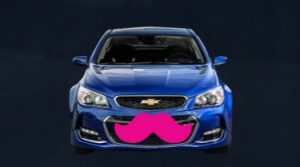 GM and Lyft forge alliance: General Motors is making its largest single investment ever in another company –
GM and Lyft forge alliance: General Motors is making its largest single investment ever in another company – 